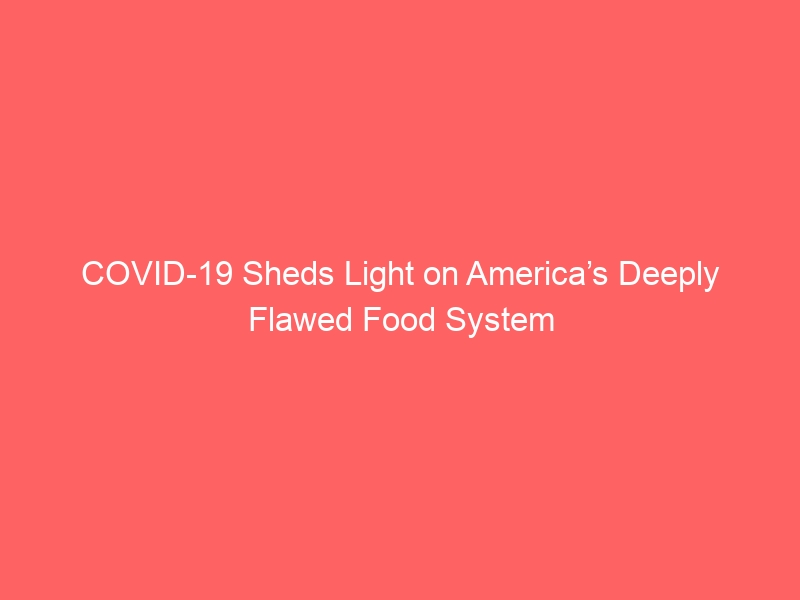August 25th, 2020
By: Nonso Elelleh
“They’re completely out of chicken nuggets AND french fries,” I hear my aunt say as she tosses the grocery bags on the kitchen floor. It’s 8 am on a Saturday morning and the least she needed this week was chicken nuggets for her toddler sons who’s daycare recently shut down. As a college student I don’t know what it’s like to take care of anyone else besides myself, but a bag of chicken nuggets probably would have made that week a little easier for lunchtime by reintroducing a little normalcy during this pandemic.
We aren’t the only home rationing chicken nuggets, but we luckily aren’t a home dependent on America’s flawed food system to get at least something on the table – with or without a pandemic. But as times get worse, COVID-19 sheds light on the holes of our capitalist food system and why this pandemic is a public health crisis in every department.
People who can afford to buy out the chicken nugget supply at a local grocery store are an example of how capitalism thrives: the rich get what they need and those of lower income are left to scavenge. Low income groups are also left to blame negating the fact that America has systems in place to keep their elite at the top. This makes low income groups victims of structural violence (3). We are taught that violence is linked to physical harm but in this context violence is the “avoidable impairment of fundamental human needs” such as food (Farmer, 1686). Classic examples of Health Equity teach us that every person has a right to achieve their optimal health without discrimination or social disadvantage (1). Health Equity guidelines also state that ill health is a possible obstacle to overcoming social/economic disadvantage and we see that happening now (1). Parents who were already working low paying jobs that are now non-essential, are struggling to make ends meet on top of feeding their children extra meals at their expense that would be normally guaranteed with school. With supermarkets constantly selling out now, and food banks are losing volunteers as well as donations during this time, the big question lies ahead: what and how are lower income people eating without putting their health at risk every day?
The health status of citizens should have been a concern for all policy makers before things got this bad (2). If this were the case, maybe policies could have been put in place for emergencies similar to this where the economically advantaged individuals’ spending could be more regulated, therefore giving people a chance to eat or a chance to buy toilet paper. Poverty is not only described as a lack of money, but more importantly, a lack of access. In its most extreme cases, lack of access leads to non-communicable diseases and even violent death (2). Restocking grocery stores will NOT cut it if we want to fix America’s hunger crisis and unfortunately it’s taking until COVID-19 for people to realize this. We need real future policy change that isn’t in the interest of the elite or corporate profit (4).
REFERENCES
- Braveman, P.A., Kumanyika, S., Fielding, J. LaVeist, T., Borrell, L.N.Manderscheid, R. & Troutman, A. (2011). Health Disparities and Health Equity: The Issue is Justice. American Journal of Public Health, 101(S1), s149-s155.
- Marmot, M. (2005). Social Determinants of Health Inequalities. Lancet, 365 (9464), 1099- 1104.
- Farmer, P., Nizeye, B., Stulac, S., & Keshavjee, S. (2006). Structural Violence and Clinical Medicine. PLoS Med; 3(10), e449. doi:10.1371/journal.pmed.0030449.
- World Health Organization. A Conceptual Framework for Action on the Social Determinants of Health.
